Abstract
Antibodies reactive with the C-peptide portion of proinsulin can be detected in the sera of patients on conventional bovine insulin regimes which include the soluble form. Direct and competitive binding studies demonstrate that C-peptide antibodies show species specificity but do not recognize free homologous C-peptide. This is likely to be due to conformational change following cleavage of C-peptide from the proinsulin molecule. Examination of sera from a large group of patients established on a standard insulin regime shows that C-peptide and insulin antibody levels do not correlate with each other and are likely to show different patterns of genetic control.
Full text
PDF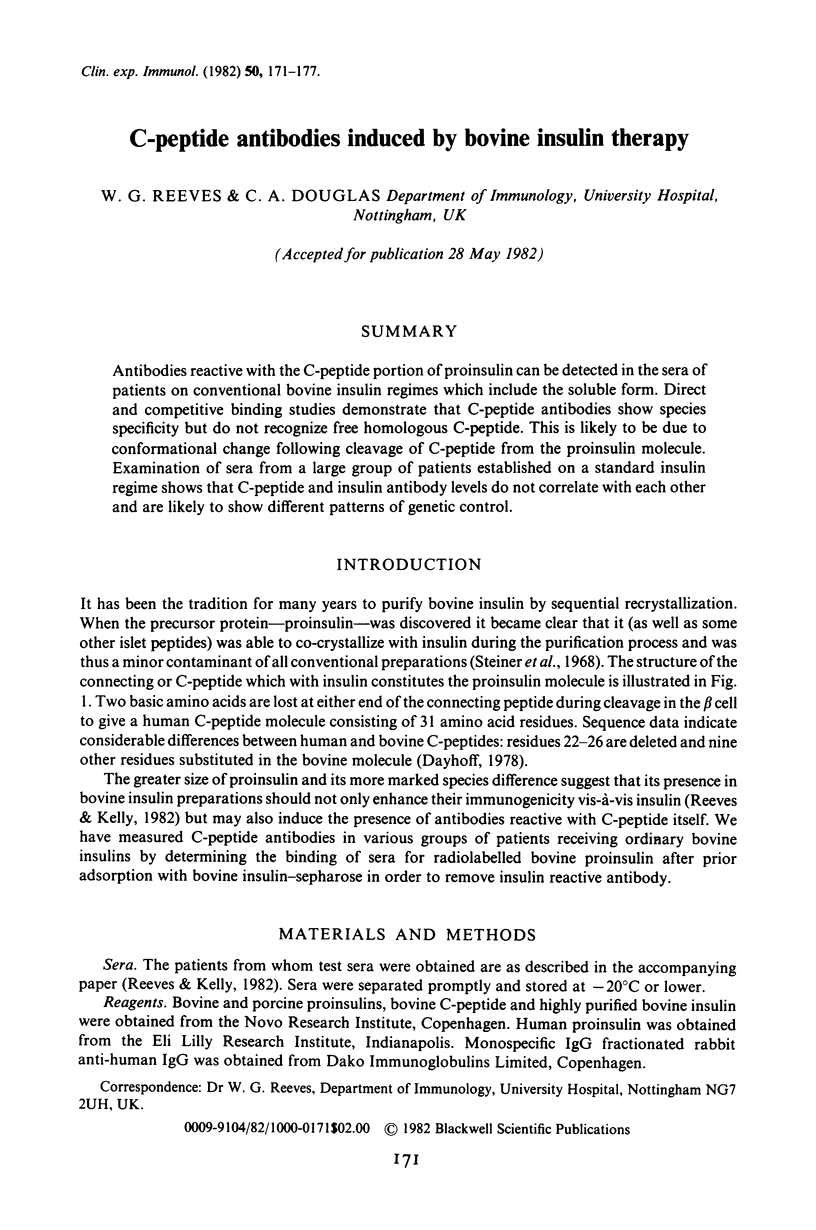
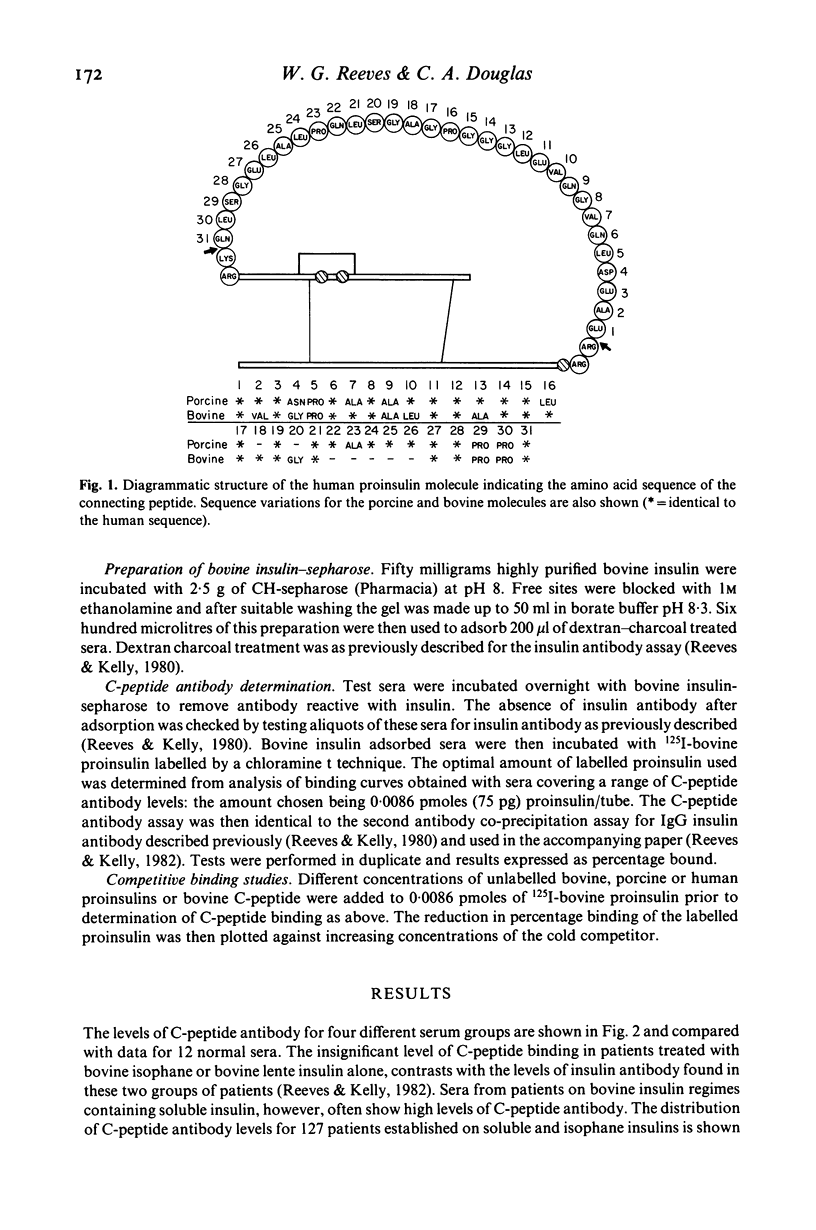

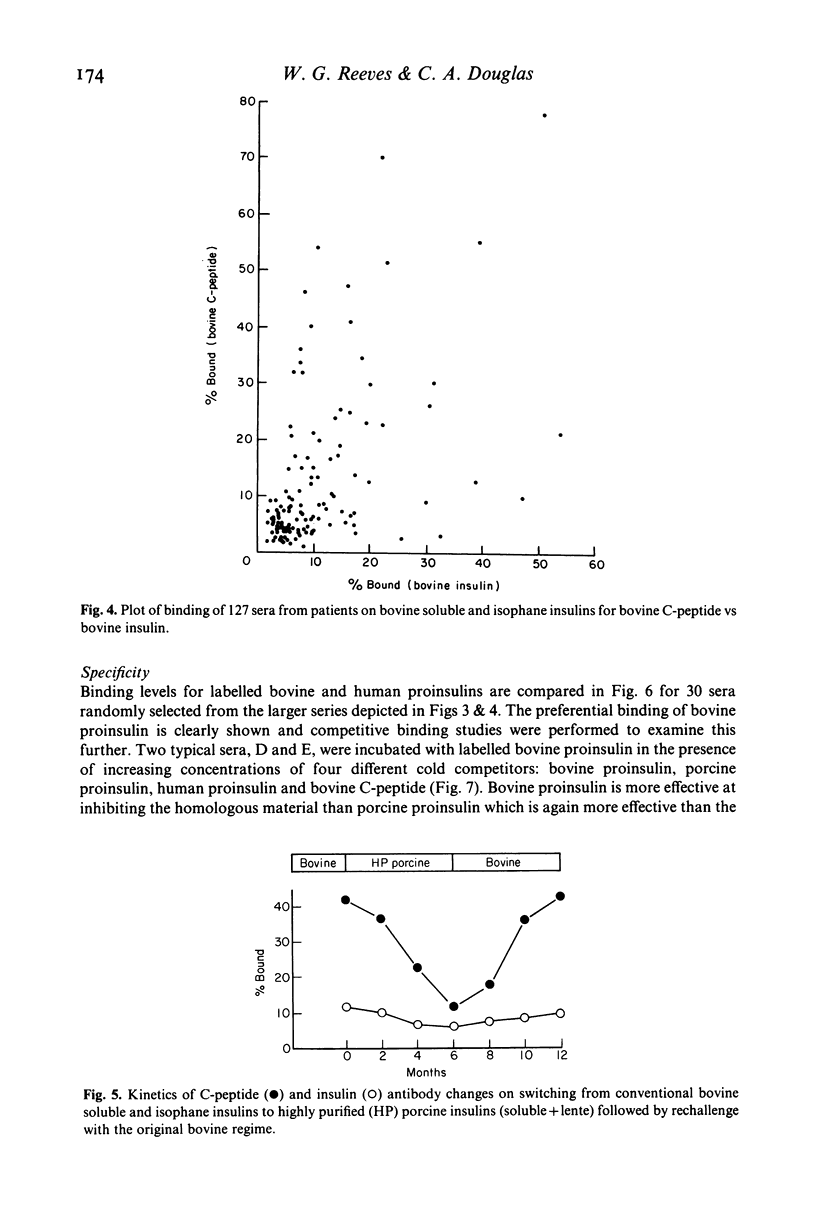
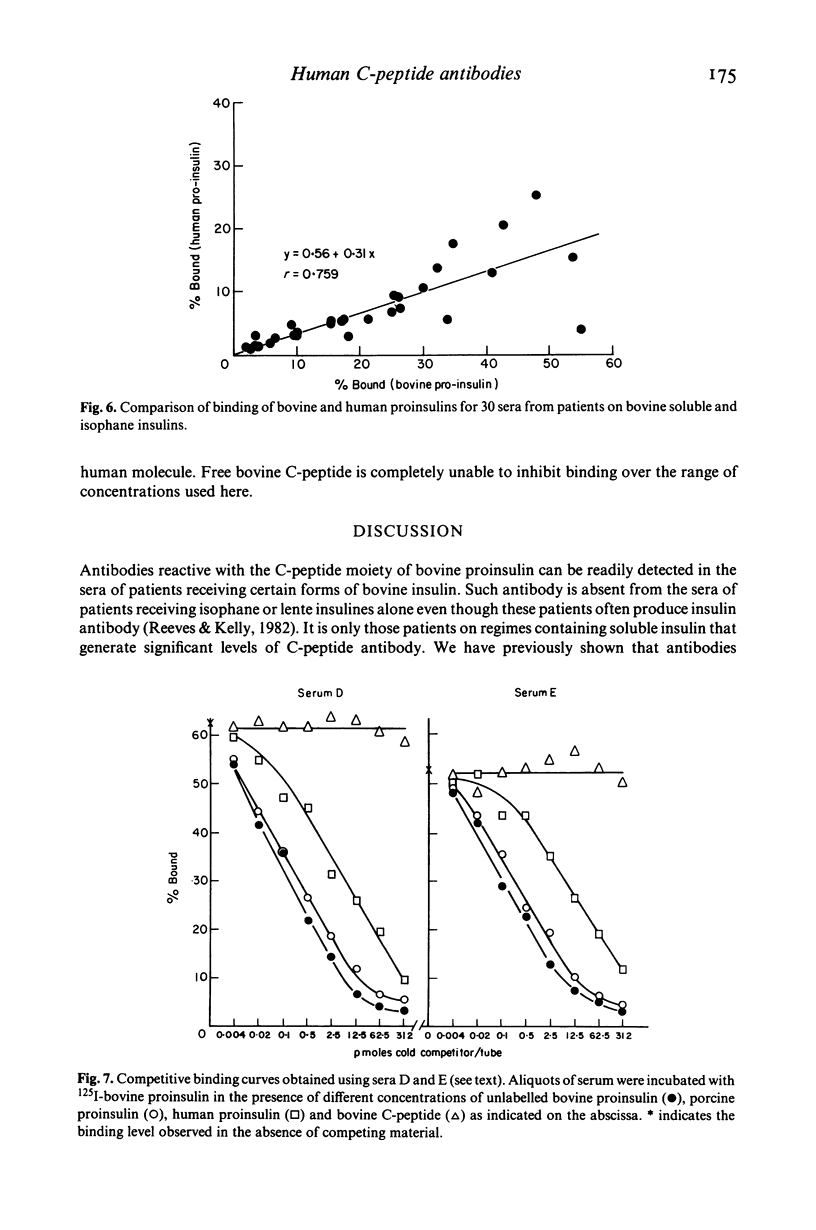
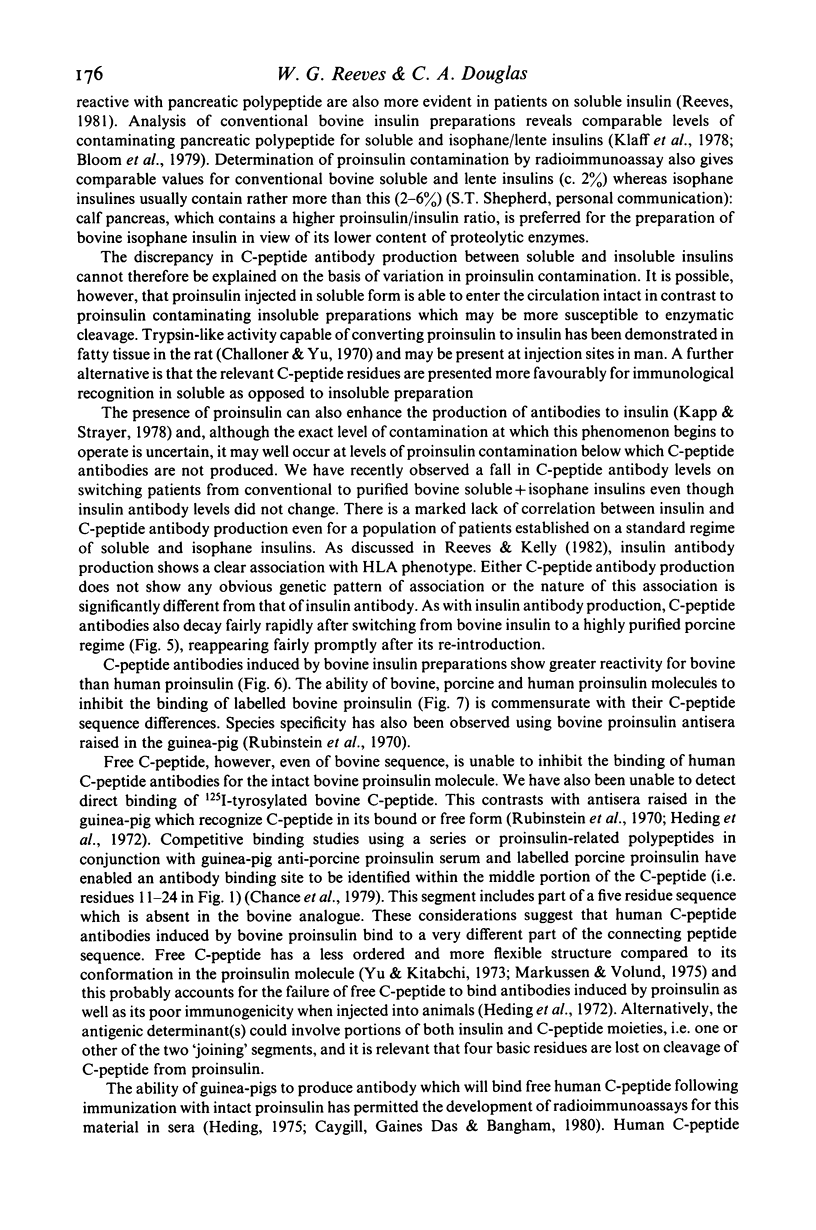
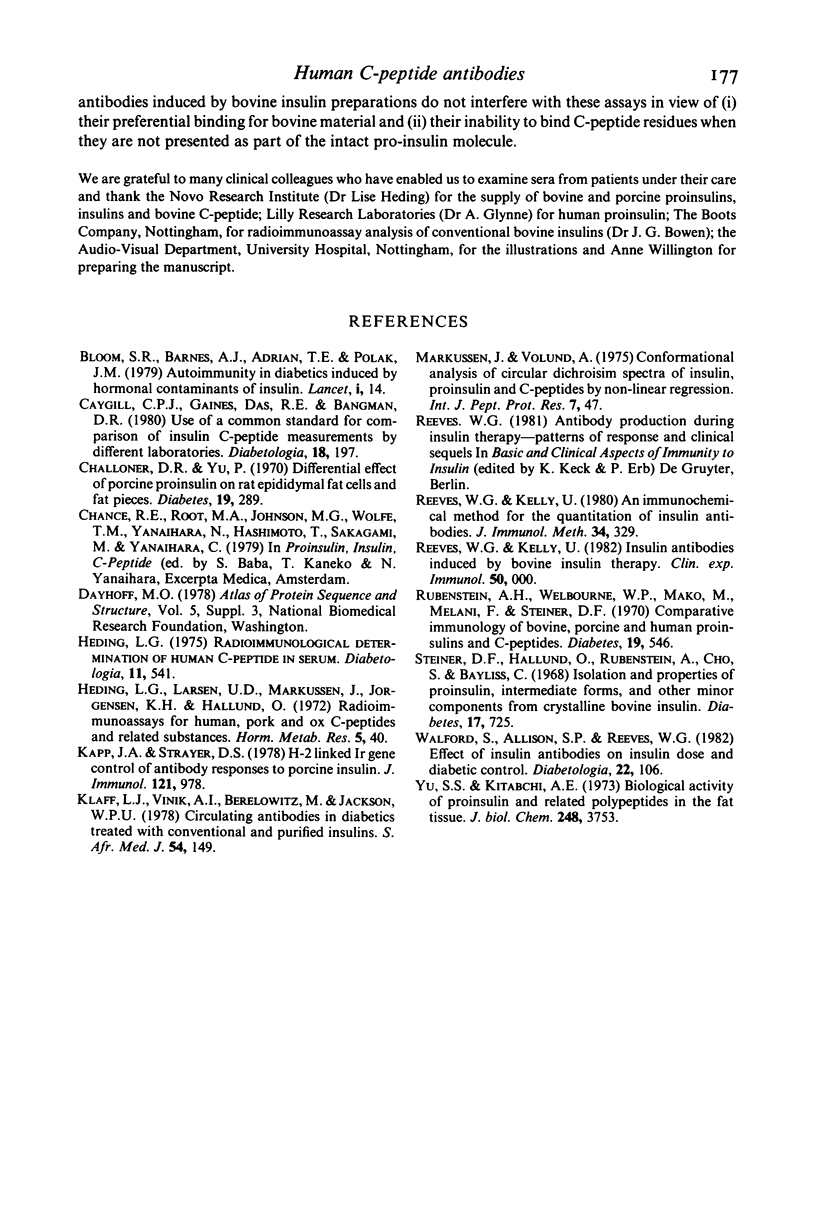
Selected References
These references are in PubMed. This may not be the complete list of references from this article.
- Bloom S. R., Adrian T. E., Barnes A. J., Polak J. M. Autoimmunity in diabetics induced by hormonal contaminants of insulin. Lancet. 1979 Jan 6;1(8106):14–17. doi: 10.1016/s0140-6736(79)90455-0. [DOI] [PubMed] [Google Scholar]
- Caygill C. P., Gaines Das R. E., Bangham D. R. Use of a common standard for comparison of insulin C-peptide measurements by different laboratories. Diabetologia. 1980 Mar;18(3):197–204. doi: 10.1007/BF00251916. [DOI] [PubMed] [Google Scholar]
- Challoner D. R., Yu P. Differential effect of porcine proinsulin on rat epididymal fat cells and fat pieces. Diabetes. 1970 May;19(5):289–295. doi: 10.2337/diab.19.5.289. [DOI] [PubMed] [Google Scholar]
- Heding L. G. Radioimmunological determination of human C-peptide in serum. Diabetologia. 1975 Dec;11(6):541–548. doi: 10.1007/BF01222104. [DOI] [PubMed] [Google Scholar]
- Kapp J. A., Strayer D. S. H-2 linked Ir gene control of antibody responses to porcine insulin. I. Development of insulin-specific antibodies in some but not all nonresponder strains injected with proinsulin. J Immunol. 1978 Sep;121(3):978–982. [PubMed] [Google Scholar]
- Klaff L. J., Vinik A. I., Berelowitz M., Jackson W. P. Circulating antibodies in diabetics treated with conventional and purified insulins. S Afr Med J. 1978 Jul 22;54(4):149–153. [PubMed] [Google Scholar]
- Markussen J., Volund A. Conformational analysis of circular dichroism spectra of insulin, proinsulin and c-peptides by non-linear regression. Int J Pept Protein Res. 1975;7(1):47–56. doi: 10.1111/j.1399-3011.1975.tb02413.x. [DOI] [PubMed] [Google Scholar]
- Reeves W. G., Kelly U. An immunochemical method for the quantitation of insulin antibodies. J Immunol Methods. 1980;34(4):329–338. doi: 10.1016/0022-1759(80)90105-2. [DOI] [PubMed] [Google Scholar]
- Rubenstein A. H., Welbourne W. P., Mako M., Melani F., Steiner D. F. Comparative immunology of bovine, porcine and human proinsulins and C-peptides. Diabetes. 1970 Aug;19(8):546–553. doi: 10.2337/diab.19.8.546. [DOI] [PubMed] [Google Scholar]
- Steiner D. F., Hallund O., Rubenstein A., Cho S., Bayliss C. Isolation and properties of proinsulin, intermediate forms, and other minor components from crystalline bovine insulin. Diabetes. 1968 Dec;17(12):725–736. doi: 10.2337/diab.17.12.725. [DOI] [PubMed] [Google Scholar]
- Walford S., Allison S. P., Reeves W. G. The effect of insulin antibodies on insulin dose and diabetic control. Diabetologia. 1982 Feb;22(2):106–110. doi: 10.1007/BF00254838. [DOI] [PubMed] [Google Scholar]
- Yu S. S., Kitbachi A. E. Biological activity of proinsulin and related polypeptides in the fat tissue. J Biol Chem. 1973 Jun 10;248(11):3753–3761. [PubMed] [Google Scholar]


